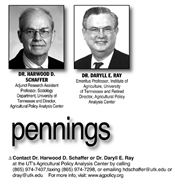|
There Are Ways To Spend Less On Prescriptions — We Take Advantage Of Them But Don’t Understand How They Work

Health insurance that covers part of a family’s medical and drug costs are a real concern for the many farmers who do not have a spouse working in town who receives employer-paid health insurance for the family.
Without a large employer who covers 70 to 80 percent of the cost, purchasing health insurance in the individual market or even through a farm group is expensive. As a result, many farmers choose policies with high deductibles and often delay needed medical care and prescriptions because of the cost.
In addition, farmers whose spouses have lost their jobs in the coronavirus crisis may have lost their medical insurance as well. It is true that they could COBRA [i] their insurance for a limited period, but the cost is often prohibitive.
Over the last decade or so we have seen a growing concern over rising drug prices for the general public with prices of many drugs set at what the market will bear or priced on value to the consumer rather than cost of production. The result has been increasing medication costs for many families, including those who live on the farm.
We too have had concerns about our own pharmaceutical costs. In retirement we have transitioned from employer-paid insurance that included prescription coverage to individual Medicare Part D prescription insurance.
About a year ago we ran across a popular prescription pricing website that provided available pricing for various pharmacies with discount coupons for most drugs. In the process of looking up drug costs to compare with what we were paying with our Part D insurance we ran across a prescription savings club offered by a national grocery chain with stores in our area
So, we went to the store’s website to compared prices with the prescription pricing website and our Medicare Part D co-payments for us and our spouses. We were shocked with what we found:
• The grocery store prescription savings club prices were significantly lower than our Part D copay;
• For one of us the savings was 80 percent, dropping from $6,100 a year in copayments to $1,200 a year;
• Most drug copayments were lower even than our copayments when we had employer-paid health and prescription drug coverage; and
• The club has an annual membership fee of around $75 for family up to 6 people.
It has occurred to us that this website in combination with a retail store pharmacy’s saving program could be a life saver for farmers, retirees, or singles who may have put off filling prescriptions because of cost.
What we found also left us with some questions for which we have not been able to find clear answers:
• When we have a $0 copay at the major grocery chain’s pharmacy as a part of their savings club – not insurance – who pays for the 90 day supply of medicine? Who pays for the pharmacist to take the time to fill the prescription? Certainly, they do not do it out of the goodness of their heart.
• How is it that one of us can now pay $1,200 a year for his family’s medicines with the savings club and the occasional use of the medication website’s coupons instead of $6,100 a year in copays with Medicare Part D? And how can that be less than what we were paying under our employer-paid health insurance when we worked at the university?
• How can a relatively expensive generic medication go from $250 for a 90 day supply when purchased from a Canadian pharmacy that has it direct shipped from a manufacturer in India to less than $15.00 with a coupon?
• How can the website offer a coupon for generic epi-pens at $126 for a two pack at a local retail pharmacy instead of a list of $377? How can they offer a coupon at $609 for the brand name Epi-Pen that lists for upwards of $730?
We suspect that Pharmacy Benefit Managers play a role in all this and maybe they use the $0 co-pay as loss-leaders. But we admit that as economists we are confused about the mechanisms of the system.
Our confusion about the economics of the system should not stop farmers, students, seniors, and others from purchasing needed prescriptions at a significant savings depending on the drug. As a note, we do keep our Part D medical insurance as a hedge against an unanticipated illness that may require a very expensive medicine (the real purpose of insurance is to cover such unanticipated random risks) and occasionally a given medication is less expensive on our Part D insurance.
We would love to hear from any of our readers who can enlighten us on how this system – one that offers drug prices that are lower than can be obtained with insurance or even be free – works. We will then pass the information on to you, our readers.
[i] The Consolidated Omnibus Budget Reconciliation Act (COBRA) gives workers and their families who lose their health benefits the right to choose to continue group health benefits provided by their group health plan for limited periods of time under certain circumstances such as voluntary or involuntary job loss, reduction in the hours worked, transition between jobs, death, divorce, and other life events. Qualified individuals may be required to pay the entire premium for coverage up to 102 percent of the cost to the plan. https://tinyurl.com/gs8ca6n ∆
DR. HARWOOD D. SCHAFFER: Adjunct Research Assistant Professor, Sociology Department, University of Tennessee and Director, Agricultural Policy Analysis Center
DR. DARYLL E. RAY: Emeritus Professor, Institute of Agriculture, University of Tennessee and Retired Director, Agricultural Policy Analysis Center
|
|